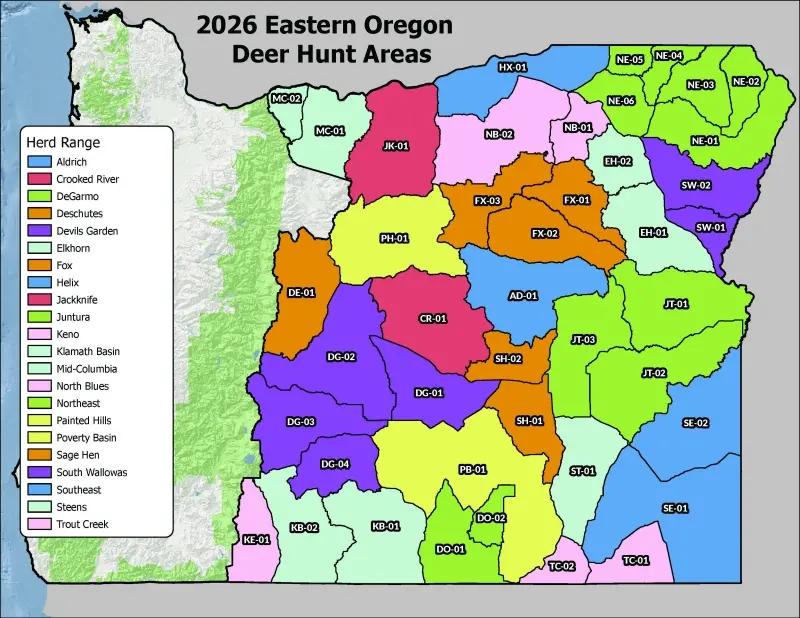




Last month, the Oregon Fish and Wildlife Commission adopted new regulations when it comes to big game hunting in the state. Most notably is the switch in how mule deer hunts will be structured. Previously, mule deer hunts were based upon Wildlife Management Units (WMU); however, going forward, eastern Oregon deer hunts will be organized by Deer Herd Ranges to “reflect mule deer biology and allow for more accurate monitoring and management,” according to the Oregon Department of Fish and Wildlife (ODFW).
WMUs have been in place since the 1950s as a way to manage hunter distribution. Current and extensive research using data from 1,400 GPS-collared mule deer to monitor herd movements and patterns have shown that WMUs are an out-of-date way of monitoring and managing the state’s mule deer.
Based upon current data, ODFW identified 22 distinct mule deer herd ranges in eastern Oregon that include summer and winter ranges as well as migration corridors between them. As a result, ODFW plans to use these newly defined Deer Herd Ranges as their primary way to monitor and manage deer, which includes harvest management.
The plan is to transition mule deer hunting from WMUs to the new deer hunt areas within herd ranges in 2026 to “better align hunting effort and associated harvest with Oregon’s mule deer populations and management goals,” according to the agency. The hope is that this new method will improve monitoring population trends and allow for quicker management responses and faster – and accurate – evaluation of management actions.
A few things to note:
This change does not affect the 2025 season.
There are no changes to the preference point system.
Proposed hunts and tag numbers for 2026 will be available in July 2025.
New hunting areas will likely be larger than the traditional WMUs – and larger hunt areas will also mean fewer individual hunts.
New hunts will apply to all eastern Oregon mule deer hunts: buck, doe and all weapon types.